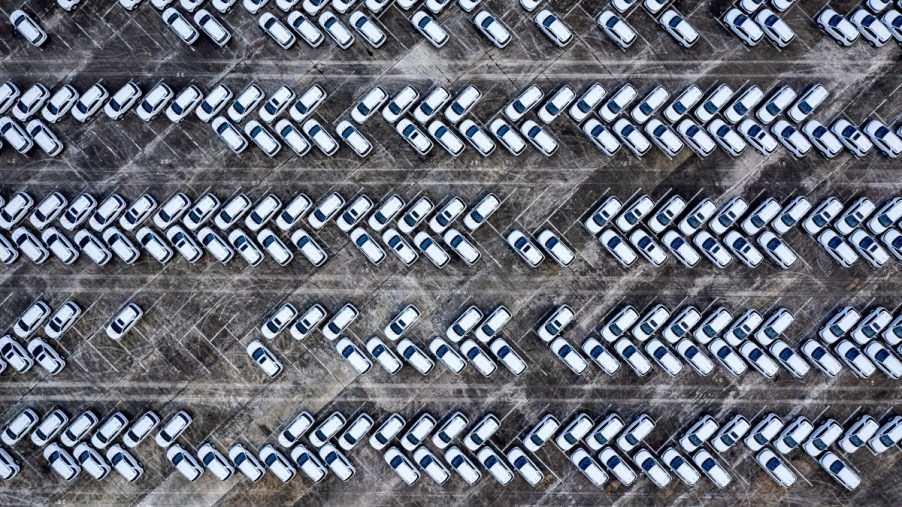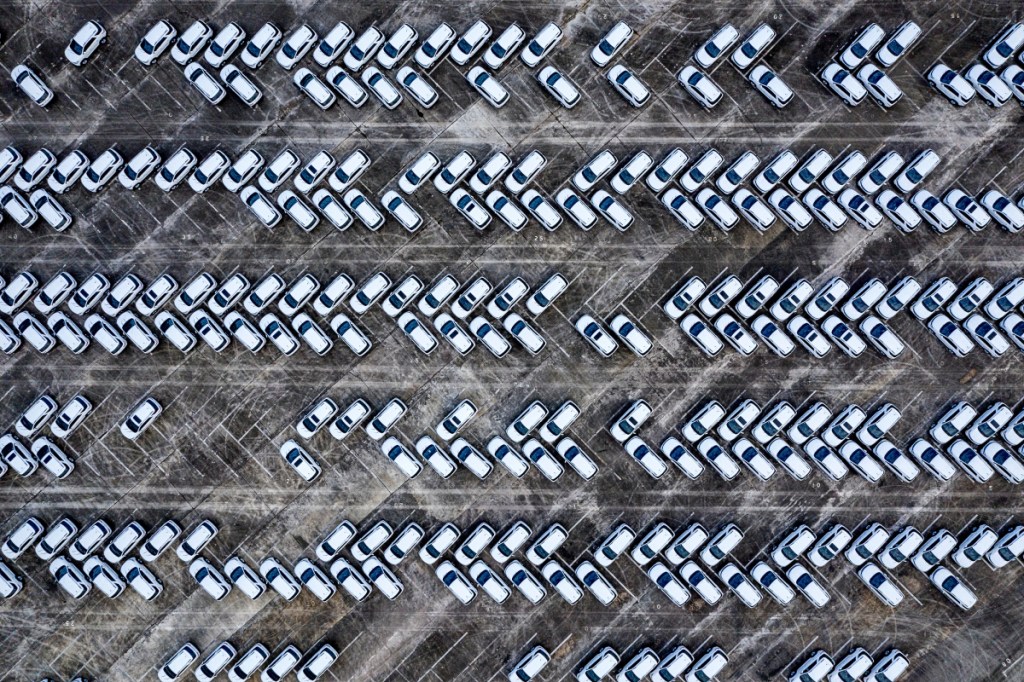
Bloomberg: The World Doesn’t Need so Many New Cars
As the automotive industry struggles to keep up with demand amid supply chain issues and semiconductor chip shortages, does the world really need this many new cars? Dealership lots used to sit full of vehicles that would remain there until enough incentives persuaded someone to take it home. Now, dealership lots sit empty as vehicles wait for parts elsewhere.
New car demand is high but inventory is still low

A recent article by Bloomberg suggests that the roll-back of vehicle production isn’t necessarily a bad thing in the long run. Prior to the pandemic, there were so many cars and so many varieties to choose from. Lots sat full to the brim of vehicles that no one wanted until another round of newer vehicles showed up.
While many predicted the automotive industry would have rebounded by now, some of the major players are still reeling from changes. Toyota noted production would be down 40% for this month, and other major players like Nissan and Honda have said the same. Many have even decided to close plants down for weeks at a time because there simply aren’t enough parts or people to keep the plan going.
Bloomberg notes that the U.K. had its worst month since 1956. Car sales in Europe fell 18% in August over last year, which was 23% lower already over the previous month.
Buy a car, get a free TV, or a cruise, or an oven
But when it comes down to it, is having fewer cars on the road a bad thing? Do people need more than one car per person in a household or three cars for a two-car household? While the industry wants the world to switch to electric vehicles, perhaps pumping out brand-new gasoline vehicles isn’t a negative.
Before coronavirus (COVID-19) ravaged the world, cars just sat around waiting to go home with people. Dealerships offered sales, incentives like free cruises or televisions, and whatever else companies could think of to get the cars gone. But then a new version would roll out with better technology, more bells and whistles, and better fuel economy. And the process would start again.
“All the while, carmakers’ profits were barely growing, margins were thinning and controlling costs was the biggest challenge. Yet production continued to chug along because companies saw no other way out of the morass.”
Bloomberg
Sources predicted that global car output was going to fall for the third year in a row come 2020. However, the universe went ahead and decided that was going to happen anyway. New vehicle output was down for 2020 and remains down for 2021.
Nothing like being forced into change
The downside to this is the prices of both new and used cars are through the roof. Plus, there are jobs lost at production plants because there isn’t as much production happening. But it doesn’t seem like the automakers had much of a choice. The manufacturers didn’t have enough parts to make cars, people were not buying cars, and now there are fewer cars to be had.
Perhaps this will all shake out to be a positive thing in a few years, but everyone has to trudge forward through the situation for now.



